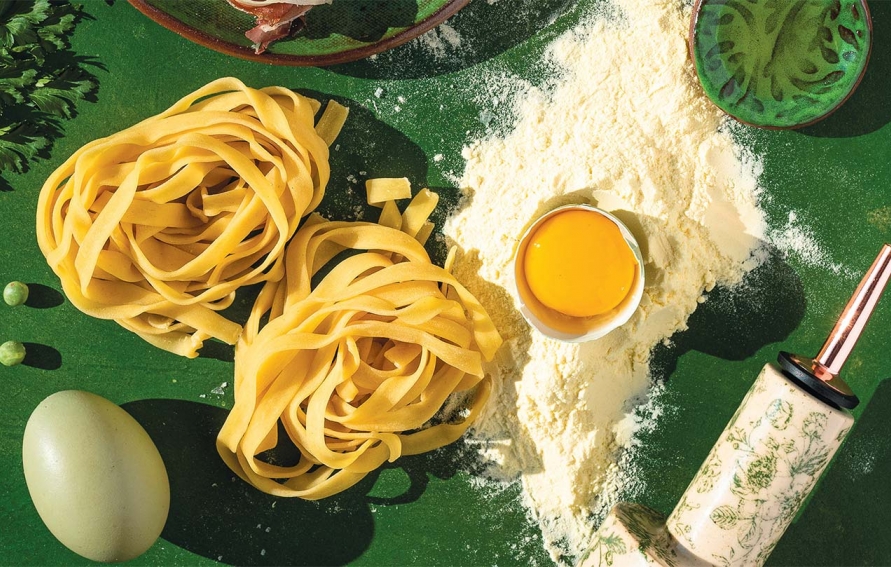Ingredients
- 4 servings
- 2 cups 00 flour (plus more for dusting)
- 5 egg yolks
- Semolina flour, for dusting
Preparation
To mix the dough: Mound the flour in the center of a large, wide mixing bowl or on a table. Make a well in the center of the flour mound and add the 5 egg yolks. Using a fork, beat together the eggs and incorporate the flour, starting with the inner rim of the well. The dough will come together in a shaggy mass when about half of the flour is incorporated.
Use your fingers to continue to mix the dough. Press any loose bits of flour into the mass of dough. Sprinkle the mixture with a little water if needed to absorb all the flour. Once the dough comes together into a cohesive mass, transfer to a lightly floured surface and knead by hand for 7 to 10 more minutes, until the dough is smooth, elastic and uniform in color. Place the dough in a lidded container and refrigerate for 30 minutes.
To form the pasta: Line 3 baking sheets with parchment paper and lightly dust with semolina flour. Set aside.
Cut off a quarter of the dough and roll it into a ball. (Keep the remaining dough covered and let it rest until you are ready to use it.) Use the palm of your hand to flatten the dough ball into an oval approximately the same width as your pasta machine, about 6 inches. Set the rollers to their widest setting and pass the dough through.
Lay the dough out onto a lightly floured cutting board or countertop and neatly fold in thirds, so it is again about the width of the pasta machine. Feed the pasta through again at the widest setting. Think of these first rollings as an extended kneading. Continue to fold the dough in thirds and roll it until it is smooth, silky and evenly textured. Do your best to make the sheet the full width of the machine between each rolling.
Once the dough is silky and smooth, you can begin to roll it out more thinly. Roll it once through each of the next two or three settings, dusting with flour as needed.
Once the pasta is about ¼ inch thick, begin rolling it twice through each progressively smaller setting. As you roll, lightly sprinkle all-purpose or 00 flour on both sides of the pasta to prevent it from sticking.
Roll out pasta until you can just see the outline of your hand when you hold it under a sheet, about 1⁄16 inch thick for fettuccini noodles.
Dust the sheets lightly with semolina flour, stack on one of the prepared baking sheets and cover with a clean kitchen towel. Repeat with remaining dough. Fettuccine can be made easily by cutting the rolled-out pasta sheets into ¼-inch-wide strips with a knife. (To make bucatini you will need a special die or extruder.)
About this recipe
recipe: Tony Hanslits | photography: Elizabeth Hannah










